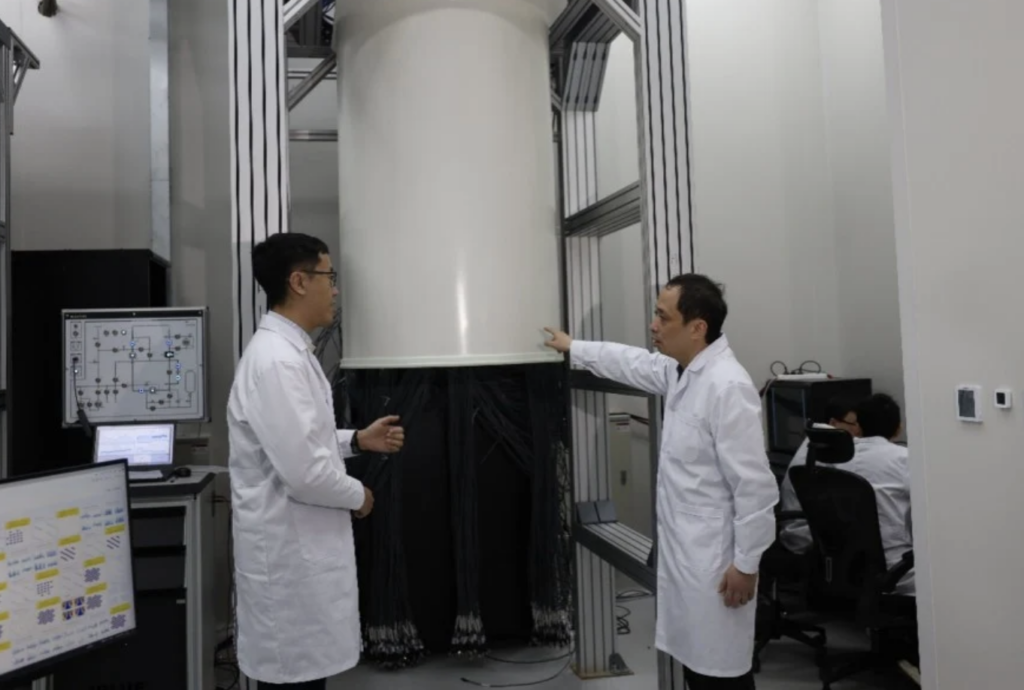Insider Brief
- Researchers have developed a hybrid quantum-classical model to design two small molecules targeting the KRAS protein, a key player in cancer biology.
- The study combined quantum circuits and classical machine learning to screen millions of compounds, yielding two promising drug candidates validated through lab tests.
- While early results show potential, the approach is still limited by current quantum technology and requires further optimization before clinical applications.
An international team of researchers have unveiled a hybrid quantum-classical model that successfully designed two promising small molecules to target a protein implicated in cancer, marking a significant step in the use of quantum computing for drug discovery.
The study, published in Nature, demonstrated how combining quantum and classical computational tools could enhance the design of potential drugs for KRAS, a protein long considered difficult to target due to its structural complexity. Scientists have long been interested in targeting KRAS because it is a protein implicated in various cancers, including lung, colorectal, and pancreatic cancers. That makes it a critical target for therapeutic development.
Its structural complexity and role in cell signaling, though, have historically made it challenging to inhibit effectively.

In this study, researchers synthesized 15 candidate molecules, two of which showed promise as KRAS inhibitors in preliminary tests, paving the way for further development.
Drug discovery is a time-intensive and costly process, often spanning over a decade and requiring billions of dollars in investment. Generative models, which use machine learning to predict new molecular structures with desired properties, have emerged as a way to navigate the vast chemical space of potential drug candidates. The integration of quantum computing into this process offers a novel approach to tackle the limitations of classical methods, especially when designing molecules for challenging targets like KRAS.
“This work showcases the potential of quantum computing to generate experimentally validated hits that compare favorably against classical models,” the team writes.
Quantum computing leverages principles like superposition and entanglement to explore high-dimensional data spaces, potentially uncovering molecular designs that classical algorithms might overlook, according to the researchers. The team’s hybrid model outperformed purely classical methods in generating viable drug candidates, which, at least suggests there may be a synergistic advantage.
They write: “While purely classical algorithms have made notable strides in drug discovery, hybrid classical–quantum approaches offer unique advantages because of the ability of quantum circuit Born machines (QCBMs) to leverage quantum effects such as superposition and entanglement. The introduction of QCBMs illustrates this advancement, offering a generative model that can outperform classical ones in certain aspects. QCBMs are quantum generative models that leverage quantum circuits to learn complex probability distributions, enabling them to generate new samples that resemble the training date.”
Methodology
The researchers used a three-stage process to design and test KRAS inhibitors.
The team first compiled a dataset of 1.1 million molecules, starting with 650 known KRAS inhibitors from the literature. They expanded this set by screening 100 million compounds from a commercial library and using an algorithm to create analogs of known inhibitors. Molecules were filtered for synthesizability and drug-like properties.
Second, the team focused on molecular design. The hybrid model combined a quantum circuit-based generative model with a classical machine learning network. A 16-qubit quantum processor generated a “prior distribution” of molecules, which the classical network refined into viable candidates. A reward function, tailored to prioritize KRAS-binding properties, guided the iterative training process.
The final step was the experimental validation. Researchers synthesized 15 molecules from their computational outputs and tested them using laboratory techniques. Two compounds, ISM061-018-2 and ISM061-022, showed strong binding to KRAS and inhibited its activity in cell-based assays without significant toxicity.
Promising Results
The molecule ISM061-018-2 exhibited broad activity across several KRAS mutants, including the G12D variant commonly associated with cancer. It demonstrated high binding affinity (1.4 μM) and selective inhibition of KRAS interactions in cell-based assays. Also, to note: ISM061-022 displayed a distinct mode of action, showing enhanced selectivity for certain KRAS mutants such as G12R and Q61H, though its effects were less pronounced against the G12D variant.
Both molecules avoided off-target effects in preliminary tests, reinforcing their potential as starting points for further development.
Early Days
The team stops short of saying this study proves a “quantum advantage”– achieving results unattainable by classical methods. The model’s success depended on a hybrid approach, suggesting that quantum computing alone is not yet sufficient for drug discovery tasks. The current reliance on small-scale quantum processors also limits the scope of molecular exploration.
The compounds are also designed in this study are early-stage candidates. The team writes that work remains to optimize their efficacy and safety profiles before clinical trials can begin. Experimental methods such as protein crystallography are needed to confirm the exact binding mechanisms.
Future Work: Qubit Boost, Transformer-Based Algorithms
The researchers plan to enhance their model by increasing the number of qubits in the quantum component and exploring transformer-based generative algorithms to improve molecular diversity and quality. Scaling these approaches could further reduce the time required for drug discovery, potentially compressing years of work into months.
By demonstrating how quantum computing can complement classical methods, this study lays the groundwork for more efficient drug discovery workflows. While the technology is still maturing, its ability to handle complex datasets and generate innovative solutions signals a transformative future for pharmaceutical research.
Please see the paper for a deeper technical dive into the research.
This team collected a huge number of scientists from around the world for the study. Researchers from the University of Toronto include Mohammad Ghazi Vakili, Alán Aspuru-Guzik, Jamie Snider, Anna Lyakisheva, Ardalan Hosseini Mansob, Zhong Yao, Lela Bitar, Danielle Tahoulas, Igor Stagljar, and Dora Čerina. From St. Jude Children’s Research Hospital, Christoph Gorgulla is listed. Harvard University is represented by Christoph Gorgulla, Krishna M. Padmanabha Das, and Huel Cox III. Stanford University includes AkshatKumar Nigam. Researchers from Insilico Medicine AI Limited are Dmitry Bezrukov, Alex Aliper, Eugene Radchenko, Xiao Ding, Jinxin Liu, Fanye Meng, Feng Ren, and Alex Zhavoronkov. Zapata AI is represented by Daniel Varoli, while Insilico Medicine Canada, Inc. includes Daniil Polykovsky. From the Dana-Farber Cancer Institute, Krishna M. Padmanabha Das is listed. University of Zagreb includes Lela Bitar, and University of Split is represented by Dora Čerina and Igor Stagljar. AQI, Inc. includes Yudong Cao, and the Mediterranean Institute for Life Sciences (MedILS) is represented by Igor Stagljar.

















